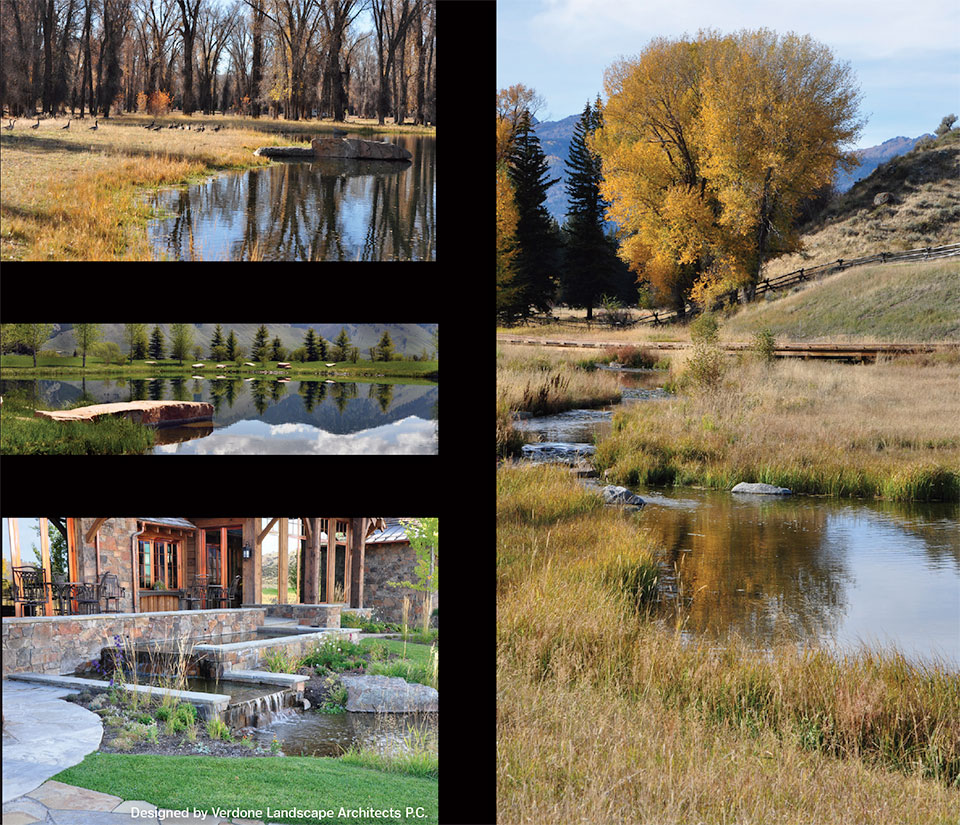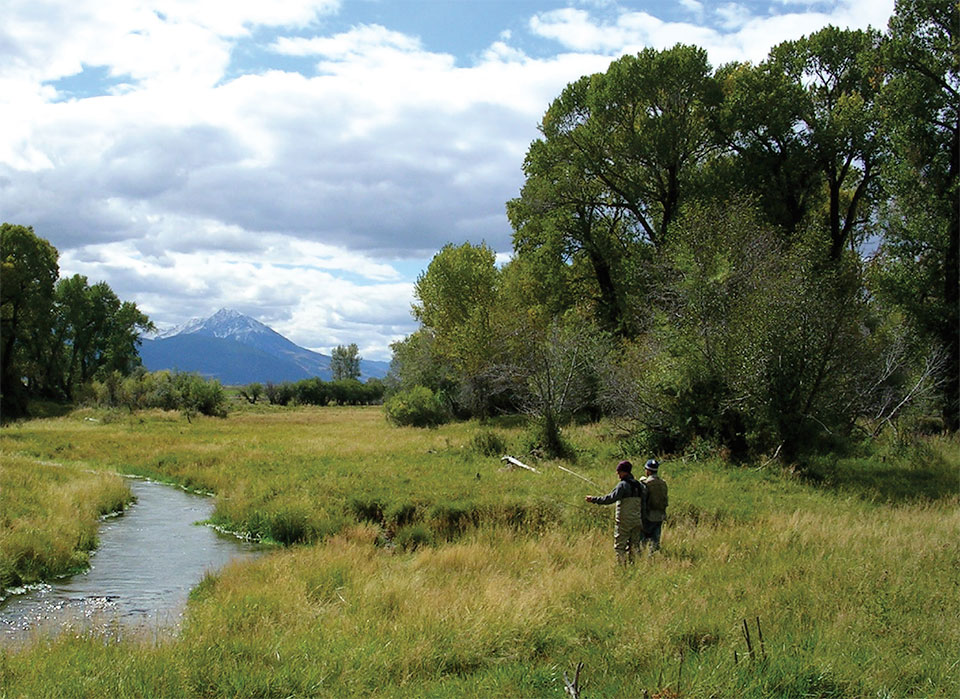Making Waves into Gentle ripples: Clearwater Restoration Talks Shop About Aquatic Environments
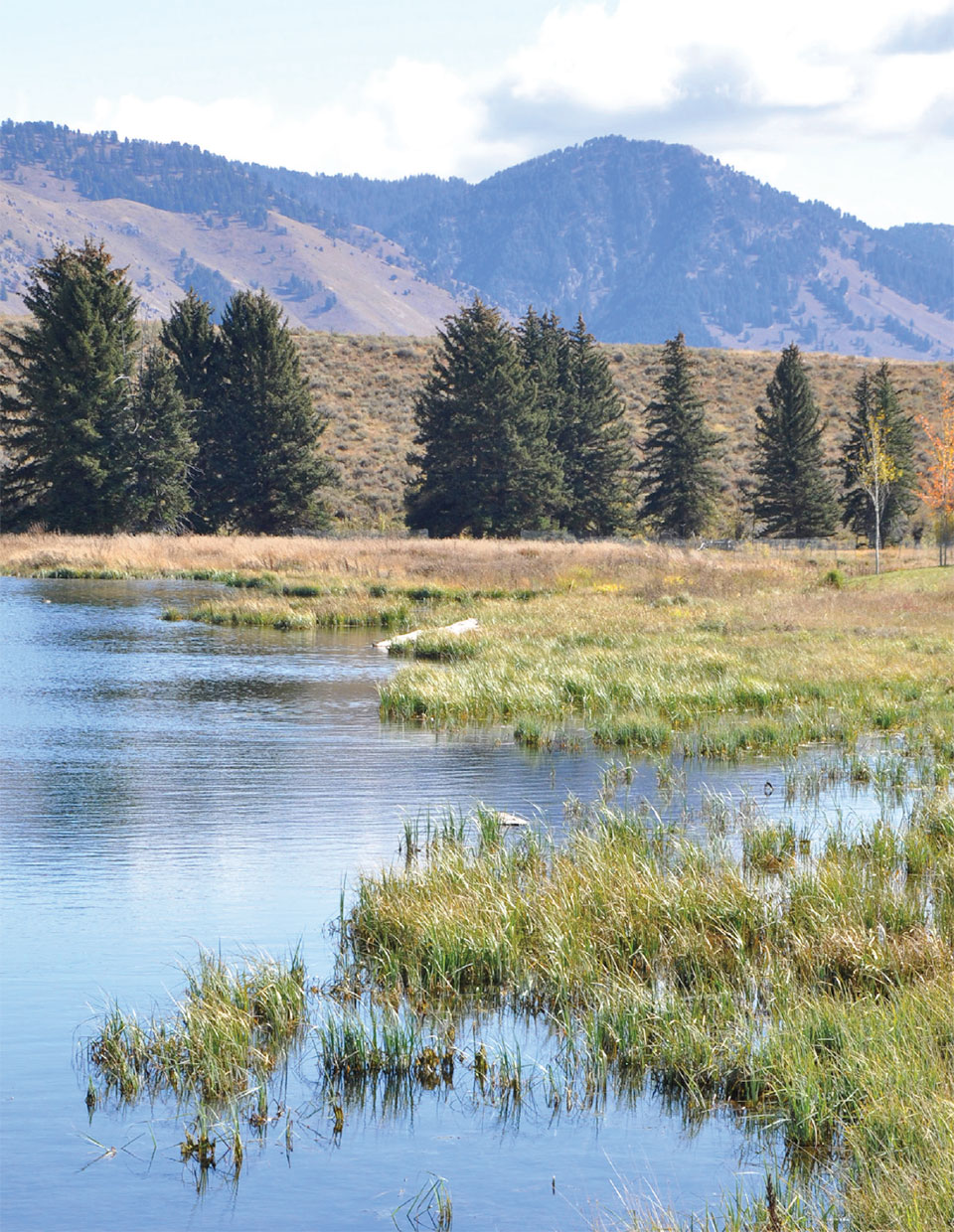
Most of us are not lucky enough to hear the sounds of Fish Creek and the Snake River when we open our windows. We all agree that the tranquility of flowing water is a pretty physical thing; as the human body is nearly two-thirds water, it only makes sense that we find relaxation from having water nearby.
So, if you’re not close to the banks of a river, how do you improvise? Invention and innovation drive the success of nearly all custom water features. Yes, the movement of H20 not only brings on the Zen but there is a great deal of opportunity to enhance the localized ecosystem of a property.
Owner and principal at Clearwater Restoration, Case Brown, explains, “Creating a water feature, pond, or restoring a stream in any environment should be undertaken with the understanding that you are mimicking a natural ecosystem that will take on a life of its own.” Perhaps that’s where the power resides in the water feature—that the pond, lake, or stream is not stagnant, it’s moving, breathing, and brings in many elements of the natural world that fall under the property owner’s stewardship.
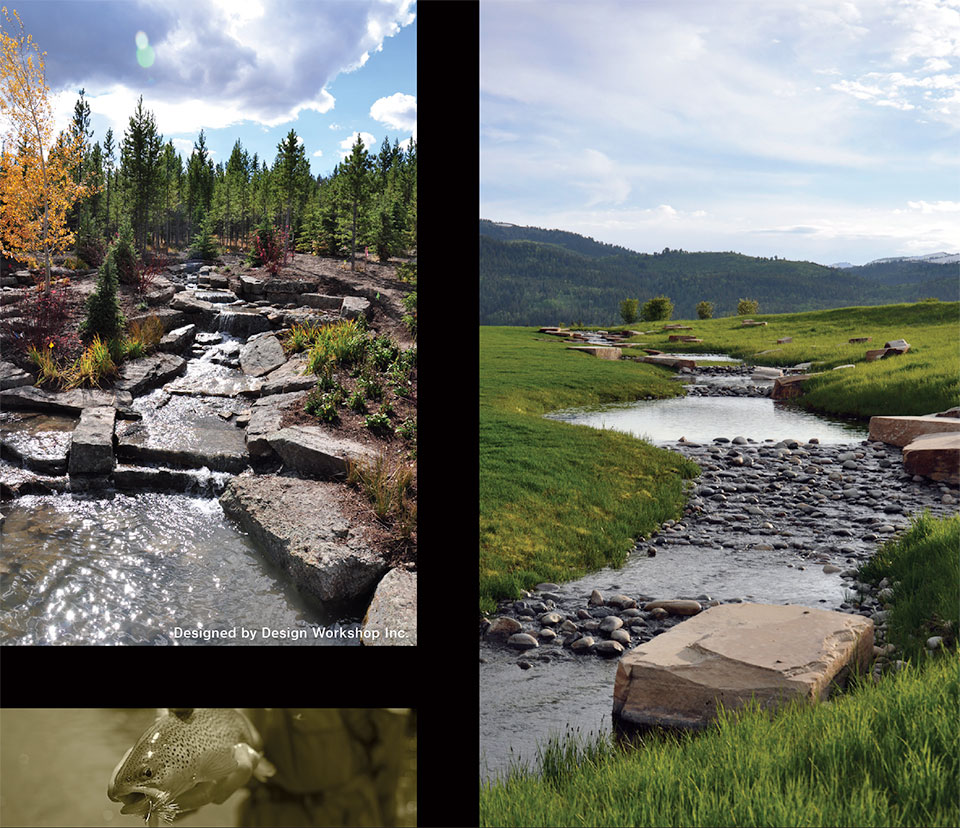
Clearwater Restoration is a Jackson-based firm that has built and managed properties in some of the Valley’s most exclusive subdivisions including John Dodge, Crescent H, and 3 Creek Ranch. Clearwater Restoration has also completed stream restoration work for several ranches in the West and the Nemacolin Woodlands Resort in Pennsylvania. For example, a recent project in Jackson was designed and built to maximize the outdoor living and recreational spaces of the property. Flowing water starts as an audible note near the spa, then cascades past the large covered entertaining area and lastly the outdoor game courts. On the pond edge a large diving rock was placed and below water steps installed to make entering and exiting the water easy and safe. All of these features are utilized during the hot summer days and in the winter months the snow is removed for great pond hockey games. Last fall a stream restoration project at the Nemacolin Resort focused on improving fish habitats and removing a small dam. The project included work on over a half-mile of private water, designed to create a diversity of fishing opportunities for guests of their Orvis®-endorsed fly fishing program. The science behind these restoration practices is subtle and effective. First, they removed a small dam to improve flows and connectivity for fish. Then, the firm enhanced pools and restored log jams to act as refuge for stocked fish and encourage colonization by native Brook Trout. The improvements also included making the guest experience a little easier with the removal of brush in the riparian area to allow access and casting lanes for clients in the fishing program.
“Water use is a hot topic in the West and the proper way to start a project, according to Brown, is to “always respect that the underlying resource, water, is kept in the highest priority. We need to implement a design and construction plan that works with water, not against it.”
Before starting any project, understanding the quantity and quality of available water is very important to building a system that sustains itself. Clearwater Restoration has built systems that monitor every gallon of water used throughout the year and projects that can sustain themselves on harvested rain and snow-melt. Brown emphasizes the ability to be able to adapt to the changes of the West, saying “Some systems have to treat poor-quality well water before entering a pond or use natural processes to filter water before entering an existing natural stream. As land and water use changes in the West from primarily agriculture and irrigation through diversion, to in-stream conservation and localized supply systems, water feature design should be advanced to keep up with the changing value of the resource.”
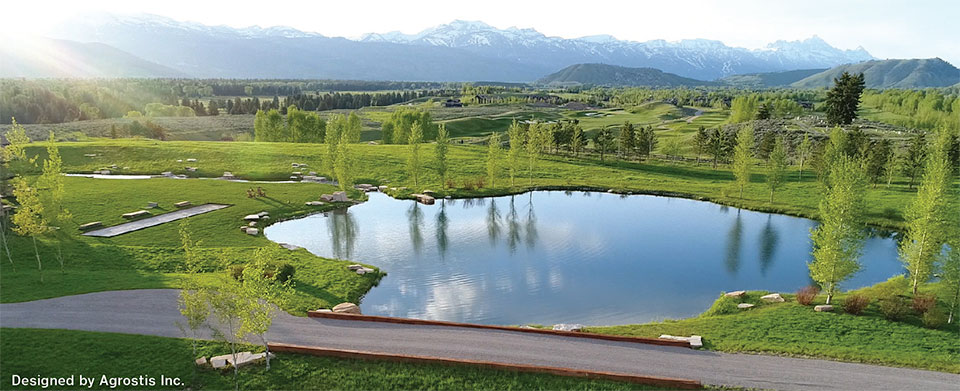
While water features offer immense enjoyment, they are an asset that do require observation and maintenance. “We do our best to understand and create an ecosystem that has all the aspects of a healthy environment, one that is properly balanced and does not over emphasize any one aspect. For example, wetlands require nutrient-rich soil to grow and thrive, but if the soil is placed in the wrong location those nutrients become available to algae that can throw a system out of balance and decrease the overall health of a system. A water feature should be built with the idea that maintenance will help to ensure the proper health and function of the amenity,” explains Brown.
Clearwater Restoration is there to make sure that the responsibility of stewardship is not based on savant knowledge but rather on deliberate choices that enhance a property’s capacity to be its best self. For example, Clearwater Restoration picks plants that are particular to the project. “There is nothing standard, no “kit” that you can use each time you build a water feature. Each spot has different terrain, moisture, and wildlife. The plants we pick are native wetland species suitable to grow and thrive in the specific region and climate for each project. Some are better at nutrient absorption, soil stability, waterfowl resistant, etc. “We make sure that each species has room to propagate but does not take over. Some common species can get out of control and cause more harm to the ecosystem than good. For example, Cattail is a common native species many people equate to a natural looking pond, but these plants can easily and quickly out-compete other species and overrun a project,” explains Brown.
With so much consideration, Clearwater Restoration sees that there is always opportunity to maximize the recreational potential for a project by ensuring they include habitat for aquatic invertebrates that sustain a healthy fish population. A recirculation stream provides just that added value. “Recirculating water serves as an element for the designers to use, connecting the built environment to the natural setting we create with the riparian plants and stream. Reflecting pools or natural looking springs start the waters interaction and influence on biological function. Aeration of the water, diversity in habitat for fish, and circulation of the water in the pond greatly increases in complexity in a relatively small zone.” explains Brown.
Clearwater Restoration stocks fish for most of their ponds and recirculating stream systems. They are sourced through private hatcheries that are inspected and certified to be disease-free by the various state agencies. They are required in most areas to stock the native strain of Cutthroat trout, but in some areas they are granted permission to stock Rainbow and Brown Trout as well. Brown enthusiastically explains how their created system can serve the fish nearly as well as if in a natural habitat. “We stock different age class fish so there is room for the small ones to grow and a diversity to the system. In most of our recirculation systems we are able to recreate the spawning habitat well enough to see successful reproduction of the stocked fish, helping create a sustainable population of fish,” says Brown.
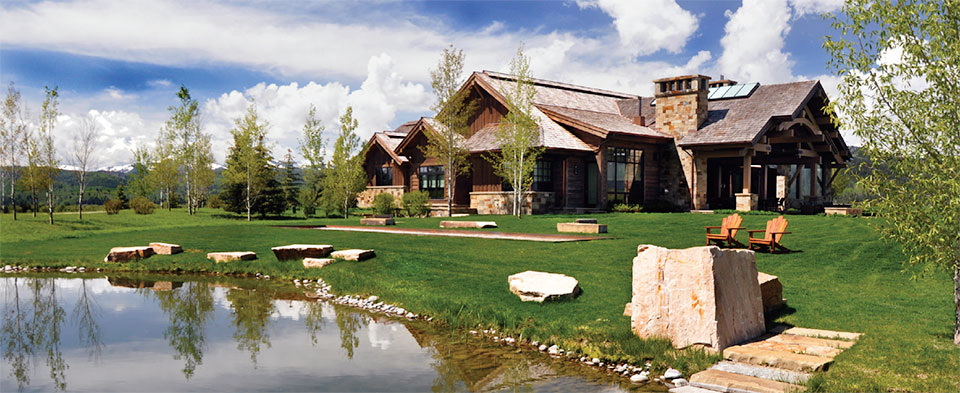
Brown’s opinion is worth listening to. His background is in environmental science and land resource conservation. Brown laughs when he explains, “I actually get to use my degree every day for work. My courses included soil physics, stream morphology, biology, entomology, agricultural use, and soil remediation. I moved to Jackson because my wife took a job for Grand Teton National Park and I had years of project experience here. My older brother is a PhD Fisheries biologist living in Bozeman and runs all of our Montana work, as well as coordinating all the fisheries science on our projects from there,” says Brown.
Brown’s local knowledge is an irreplaceable strength in navigating the process of aquatic restoration and design creation. His team and his years on the ground in the Tetons make him especially adept at the process. “Challenges come in all shapes and sizes on our projects, from the local Teton County regulations of ponds to the Federal rules on wetlands in stream restoration projects. With engineers and landscape architects we navigate the individual rules and regulations of the area,” says Brown. As he points out, most regulations are in place to ensure the best outcome of a project, not to hinder it. Brown says openly that he’s in favor of and encouraged by the new Teton County rules guiding the designs and construction of water features because it is important to help raise the level of standards for how water features are designed and built.
Clearwater Restoration’s projects range widely in size and form, from rivers to fishing ponds to waterfalls and wetlands. The firm works on nearly any size project from small architectural water features to 10,000-acre ranch master plans and in nearly any area, with a 4 acre lake in Ten Sleep, Wyoming and a recirculating stream in Buffalo, New York. They have also completed stream restoration work around Wyoming, in White Sulphur Springs, Montana, as well as the Pennsylvania project. The firm offers yearly maintenance on the projects it builds, and according to Brown, “We’re always willing to help people understand how to best keep the ecosystem in balance. We do everything we can in the design and installation to make sure clients are happy and the system functions properly.”
Clearwater Restoration focuses entirely on aquatic construction and restoration. Their science expertise combined with the ability to implement the complex projects on the ground allow the firm to be specialized. The finished products they create offer a balanced environment for everything from microscopic organisms to large fish, and the habitats required to be self-sustaining. These constructed elements provide clients with an ability to relax in their landscape and connect with water as well as provide habitat to a complex but important ecosystem.
“We work very hard to make the finished product look and feel as if it was always a part of the property, well before any of us were here,” describes Brown. In explaining where design and restoration intersect, it’s clear that Brown can see a much larger picture at work than just a beautiful ambiance.
